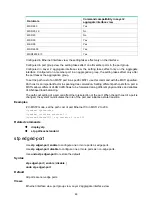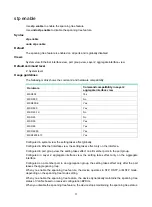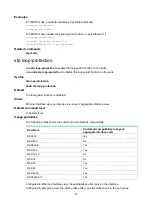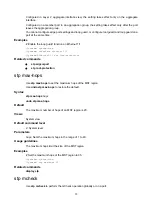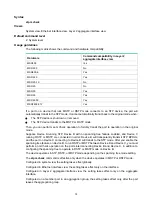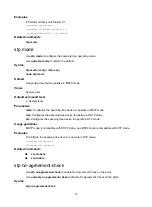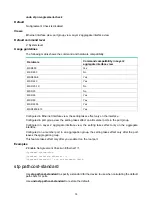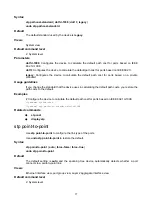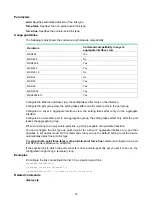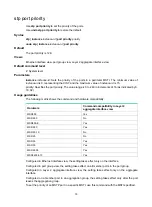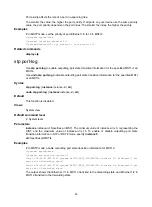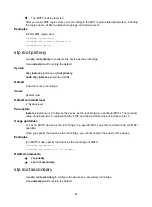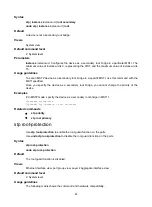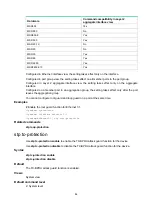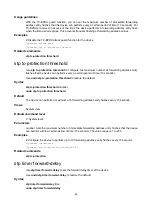
70
Default command level
2: System level
Parameters
enable
: Configures one or more ports as edge ports.
disable
: Configures one or more ports as non-edge ports.
Usage guidelines
The following matrix shows the command and hardware compatibility:
Hardware
Command compatibility in Layer 2
aggregate interface view
MSR800 Yes
MSR 900
No
MSR900-E Yes
MSR 930
Yes
MSR 20-1X
No
MSR 20
No
MSR 30
Yes
MSR 50
Yes
MSR 2600
Yes
MSR3600-51F Yes
Configured in Ethernet interface view, the setting takes effect only on the interface.
Configured in port group view, the setting takes effect on all member ports in the port group.
Configured in Layer 2 aggregate interface view, the setting takes effect only on the aggregate
interface.
Configured on a member port in an aggregation group, the setting takes effect only after the port
leaves the aggregation group.
If a port directly connects to a user terminal rather than another device or a shared LAN segment,
this port is regarded as an edge port. When the network topology changes, an edge port will not
cause a temporary loop. You can enable the port to transit to the forwarding state rapidly by
configuring it as an edge port. H3C recommends that you configure ports directly connecting to user
terminals as edge ports.
Typically, configuration BPDUs from other devices cannot reach an edge port, because the edge port
does not connect to any other device. If a port receives a configuration BPDU when the BPDU guard
function is disabled, the port functions as a non-edge port, even if you configure it as an edge port.
You cannot configure edge port settings and loop guard on a port at the same time.
Examples
# Configure Ethernet 1/1 as an edge port.
<Sysname> system-view
[Sysname] interface ethernet 1/1
[Sysname-Ethernet1/1] stp edged-port enable
Related commands
stp loop-protection














